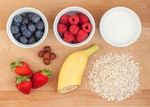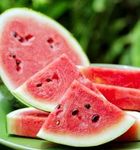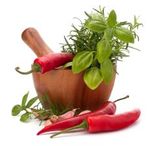OCTOBER 2021 - First National Bank
←
→
Page content transcription
If your browser does not render page correctly, please read the page content below
OCTOBER 2021
The VOICE Newsletter designed exclusively for
our VIP Club® Members
HALLOWEEN ISN’T JUST FOR KIDS! THE FRIGHTENINGLY FUN Follow us on
HOLIDAY IS A FAVORITE FOR ADULTS, TOO, THOUGH MANY DON’T Facebook
@firstnationalbanksmn
KNOW THE ORIGINS OF MANY HALLOWEEN TRADITIONS…
Source: www.parade.com/1066846/jessicasager/halloween-trivia/
▪ Why are black cats associated with Halloween (and bad luck)? The Puritans Featured Articles In This
associated black cats with witchcraft, leading to the onyx-colored felines’ Issue:
association with Halloween.
Halloween Traditions
▪ What was candy corn originally called? Chicken Feed
Flu Shot Reminder
▪ What medieval English tradition inspired trick-or-treating? On All Souls Day, the
poor would go “souling,” knocking on doors offering prayers for residents’
deceased loved ones in exchange for food. Local Events
▪ When is Halloween thought to have originated? 4,000 B.C. Added Sugar is Not So
Sweet
▪ What Celtic tradition led to modern-day trick-or-treating? For the celebration of
Samhain, people would put treats or food out to pacify evil spirits. Financial Travel Tips
▪ When was Halloween first celebrated in the United States? Around the 1840’s
when there was a flood of Irish immigrants fleeing from the potato famine.
▪ How many calories are in an average trick-or-treater’s Halloween stash?
About 11,000!
Check out the article in this issue that might make
you think twice before diving into that
left-over Halloween candy… MEMBER FDICIT’S A GOOD
TIME TO
GET YOUR
FLU VACCINE
THE CDC
RECOMMENDS
THAT ADULTS &
CHILDREN OLDER THAN
6 MONTHS OLD
GET A FLU VACCINE BY
THE END OF OCTOBER.
While the US remains focused on the COVID-19 pandemic, we need to also be aware of
flu season as we approach winter. Influenza (flu) viruses typically spread in fall and winter,
with activity peaking between December and February. Getting vaccinated now can lower
your chances of getting the flu.
Flu is a serious disease, caused by influenza viruses, that can lead to hospitalization and
even death. Every flu season is different, and the substantial health impacts can vary
widely from season to season, with some flu seasons worse than others. Your best
defense is vaccination, which provides protection from flu and its potential complications.
COVID-19 AND FLU
It’s likely that flu viruses and the virus that causes COVID-19 will circulate together this fall VACCINATION
and winter. The flu vaccine does not prevent COVID-19. The FDA has approved one PREVENTED MORE
vaccine for the prevention of COVID-19 and has issued emergency use authorizations for THAN 7 MILLION
three vaccines to prevent COVID-19. FLU ILLNESSES,
105,000
Meanwhile, the flu vaccines are approved by the FDA for the prevention of influenza HOSPITALIZATIONS,
disease and to protect against four different virus strains of influenza. Getting vaccinated AND 6,300 FLU-RELATED
to prevent this disease can help keep you out of the doctor’s office for a sick visit and DEATHS, ACCORDING
preserve health care resources for patients with other diseases and medical conditions, TO THE CDC.
including COVID-19.
WHO’S MOST AT RISK OF GETTING THE FLU GET YOUR
Typically, children and older people are most at risk of getting sick with influenza. You can FLU
also reduce the spread of the flu and its effects by taking practical measures such as VACCINATION
washing your hands, covering coughs and sneezes, and staying home when you are sick.
TODAY!
www.fda.gov/consumers/consumer-updates/its-good-time-get-your-flu-vaccine?Natural Sugars are found in fruits, vegetables, milk and grains. Other
sugars – the kind added to foods, drinks and condiments during
processing – may increase heart disease risk. A typical 12-ounce can of
ADDED regular soda has 130 calories and 8 teaspoons of sugar. Added sugars
SUGAR also sneak into seemingly “better for you” beverages, such as sport
drinks, fruit drinks and flavored milks.
IS NOT
Added Sugar Sources: Sugar-sweetened beverages are the biggest source
SO of added sugars in the American diet. Other sources are baked items (like
SWEET cakes, muffins, cookies and pies), ice cream and candy.
The American Heart Association Recommends: Limit added sugars to no
more than 100 calories a day (6 teaspoons) for most women and no
more than 150 calories a day (9 teaspoons) for most men.
READ FOOD LABELS.
Syrup, molasses, cane juice
FIND IT: and fruit juice concentrate
mean added sugar, and so do
REPLACE IT:
most ingredients ending with
the letters “ose” (like fructose
and dextrose).
Enjoy fruit for Cut back on Buy 100% Enhance foods Add fresh or Drink plain or
dessert most the amount of juice with no with spices. dried fruit to sparkling
days and limit added sugars added sugars. Try cinnamon, cereal and water,
traditional you eat and nutmeg, mint oatmeal. unsweetened
desserts to drink. or ginger. tea or
special sugar-free
occasions. beverages.
Source: https://www.heart.org/en/healthy-living/healthy-eating/eat-smart/sugar/added-sugar-is-not-so-sweet-infographicYou can also read



























































